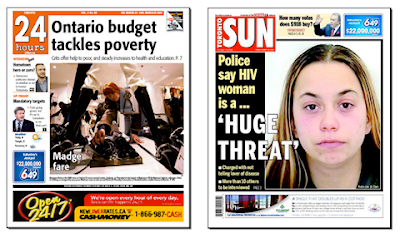In 2000, Ted Fang and his mother, Florence Fang, obtained the Examiner name, its archives, 35 delivery trucks and a subsidy of $66 million (over three years) as part of the Hearst Corporation's acquisition of the Chronicle. The last day the Hearst Corporation published the Examiner was November 21, 2000.
On September 12, 2001, the front page of the Examiner featured a photo of the Twin Towers of the World Trade Center on fire as the result of the September 11, 2001, attacks, and the accompanying headline read: "BASTARDS! A Changed America."
On February 24, 2003, the Examiner switched from a broadsheet to a tabloid and became a free daily newspaper. Three days later, the Fangs laid off 40 staffers in the paper's circulation and news departments. The switch to a free tabloid was made easier by the fact that a profitable free tabloid, the Palo Alto Daily News, was operating just 20 miles south of San Francisco, providing a model the Examiner could copy.
On February 19, 2004, Denver, Colorado-based billionaire Philip Anschutz purchased the Examiner and its printing plant for $10.7 million. His new company, Clarity Media Group, launched the Washington Examiner in 2005 and Baltimore Examiner in April 2006. A redesign of the three newspapers was completed in 2006 by Robb Montgomery.
Management -- The Examiner has had three editors since August 2004. Vivienne Sosnowski was executive editor from that month until December 2005, when she was transferred to the Washington Examiner. She came from Canada, as did her replacement, Calgary Herald editor, Malcolm Kirk. Kirk was executive editor from December 2005 until he returned to Calgary in July 2006 to become publisher of the Calgary Herald. On July 20, 2006, the Examiner announced it would promote managing editor James Pimentel to the executive editor post.
In 2000, The Fang Family obtained the Examiner, as part of the Hearst Corporation’s acquisition of the Chronicle. On February 19, 2004, Philip Anschutz of Denver, Colorado purchased the Examiner and its printing plant. His new company, Clarity Media Group, launched the Washington Examiner in 2005 and Baltimore Examiner in 2006.
New Business Model -- Under Clarity ownership, the Examiner pioneered a new business model for the newspaper industry. The Examiner, designed to be read quickly, is presented in a compact, tabloid size without story jumps. It focuses on local news, business, entertainment and sports with an emphasis on content relevant to local readers. It is delivered free to targeted homes in San Francisco and San Mateo counties, and to single-copy outlets throughout that market area. Its circulation is audited by Certified Audit of Circulation (CAC). As of January 2007 The Examiner had a circulation of 190,000 daily and 250,000 weekend copies, making it the highest-circulation newspaper in San Francisco and San Mateo counties.
So far, nobody has complained to Wikipedia about these self-serving changes. (Photo of Anschutz by Matthew Staver, Bloomberg News Service.)

 Brisbane, Australia's third largest city (population of 1.8 million), has a new free daily -- mX -- produced by Queensland Newspapers, the same company that owns the town's traditional paid morning paper, the Brisbane Courier Mail.
Brisbane, Australia's third largest city (population of 1.8 million), has a new free daily -- mX -- produced by Queensland Newspapers, the same company that owns the town's traditional paid morning paper, the Brisbane Courier Mail.  Who advertises for a vice president of anything? Isn't "vice president" supposed to be a special job? Not something you advertise on Billboard.com, right? But consider the Examiner's current state. If you page through the Examiner free dailies, you'll see that they have maybe 20, 25 paid ads per day. Obviously not enough to break even. The Examiner was planning to go into 70 cities a couple of years ago. They seemed to have hit a dead end after paper No. 3. And check out the weird job interview process, as described by the
Who advertises for a vice president of anything? Isn't "vice president" supposed to be a special job? Not something you advertise on Billboard.com, right? But consider the Examiner's current state. If you page through the Examiner free dailies, you'll see that they have maybe 20, 25 paid ads per day. Obviously not enough to break even. The Examiner was planning to go into 70 cities a couple of years ago. They seemed to have hit a dead end after paper No. 3. And check out the weird job interview process, as described by the 